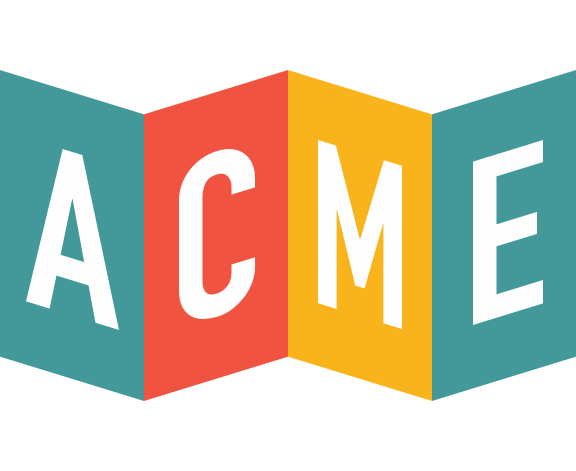
Museum Marketing Strategies
April 29, 2019
Museums are the cultural hallmark of any community. They act as cultural, historical, and artistic pillars where people can learn and interact with relics of the past and present. They’re also constantly changing, which means that you, as a museum, need to let the public know what’s going on with these changes.
Developing a marketing strategy for your museum is less about selling tickets than it is understanding the long-term vision of your museum. Once you understand the direction your museum is heading, you can begin to identify who you need to connect to, what you need to communicate to them, and how you’re best going to reach them to reach your goals.
Create a Long-term Marketing Plan
It’s difficult to develop a marketing strategy without first identifying and creating a road map of where your museum is headed.
Because each museum faces unique challenges and needs, your marketing strategy should be in line with the museum’s greater business strategy and vision. While brand awareness, for example, on social media may be lacking for one venue, other museums might be struggling to competently analyze data and utilize metrics to reach their goals. A long-term plan will help elucidate your museum’s strengths and weaknesses, allowing you to develop an appropriate marketing strategy.
Here are some questions to consider when creating your long-term marketing plan:
- How strong is your online and social media presence? How is this strength measured?
- How strong is your relationship with the local community? How is this strength measured?
- How accurate and accessible are your analytics? Are you utilizing that data to better understand who your visitors are and what they’re interested in?
- Do you have any education programs in place? Is your museum situated in an area with a large number of nearby schools?
- Who are your main competitors? What are they doing with their marketing and how is it affecting your visitor rate?
- Are you being realistic with your strategy? Are your marketing goals in-line with your budget and available resources?
Cater your Marketing Strategy to Guests
Much of marketing comes down to connecting with your intended audience, and there’s no way to connect with an intended audience if you don’t know who that audience is. Data mining, analyzing visitor demographics, and knowing your community are all ways to learn about the kind of guests who visit your museum and devise a strategy to either reach out to new visitors or solidify existing members.
Whatever your specific needs are, it’s important to understand that marketing strategies can’t reach everyone. The most effective museum marketing strategies will be based around a specific kind of visitor on a specific platform that is line with the overall direction of your long-term marketing plan. Once you’ve identified that target visitor, how can you differentiate yourself from other museums or exhibitions? What unique events or exhibits can you introduce to your members?
Here are some ways to identify and reach out to your intended audience:
- Customer Relationship Management(CRM) technology will provide you with a large pool of data for all your guests and contacts. You can track their visits, evaluate their demographics, identify trends and interests, and reach out to every individual in your database from one, simple platform.
- Where is your museum located? Are you in a historical city, or are you near historical monuments? Are there any universities near by, or are there more grade schools? Understanding your local community will allow you design new events that appeal to the community.
- What is social media telling you? Identify who’s subscribed or following your page. Review the videos, pictures, or articles you post to see what’s getting the most likes or shares.
- What are your ticket sales telling you? How can you develop future exhibits based on past successes?
Social Media & Smartphones in your Museum Marketing Strategy
It’s no surprise that social media and smartphones are an integral part of any marketing strategy. Much of how we stay connected to what’s happening around us and to our social circle is through our phones. With museums, however, there are some unique opportunities to integrate technologies into their marketing strategy that are changing the way people interact with museums.
Museums have been fighting smartphone culture for years, and it isn’t hard to see why; ensuring positive visitor experiences, thievery prevention, and preserving paintings by reducing flash photos are all valid concerns.
Many museums today, however, are embracing smartphone culture into their galleries. Downloadable apps allow visitors to follow and listen to self-guided tours in multiple languages. Museums can design exhibits that encourage pictures, selfies, and direct guest interaction with the art, bolstering the museum’s presence on social media and allowing their guests to spread the word for them. If your museum believes in a more traditional approach or holds sensitive material, consider introducing specific events that present a limited opportunity to integrate smartphones into the visitor experience.
Connect your Museum to the Local Community
Engaging with your local community is an excellent way to create perennial memberships instead of one-time visits. Teaming up with schools, city council members, research groups, and other collectives are all great local resources to employ.
Museums can also get creative and integrate pop-up museums, art crawls, book clubs, and gift shops in their local marketing strategies. Have fun and engage with your community members. Bring the museum to schools, local events, and other businesses. If you’re about to open a new exhibit or gallery, host an event that showcases some of the art.
There are several ways to develop a robust marketing strategy that fits the needs and demands of your museum. ACME is a multi-functional cloud ticketing system that utilizes an advanced POS system, CRM technology, and the flexibility of off-site servers so you can manage your museum from anywhere. Utilize our data retention technology and open APIs to identify, manage, and organize everything you need to create an efficient and smart marketing strategy. Signup for a free demo here.

